



Charles Dickens was born on 7 February 1812 at 1 Mile End Terrace, Landport, Portsea. This house, now 393 Old Commercial Road, Portsmouth, had been the home of his parents since 1809 when they moved to Portsmouth. His father, John Dickens, then stationed in the Portsmouth dockyard, was a clerk in the navy pay office, with a salary of 80l. a year. Charles Dickens remembered the little garden of the house at Portsmouth, though his family moved to London when he was only two years old.
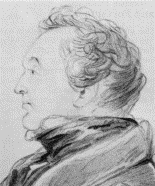
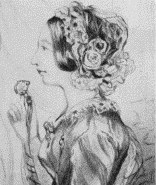
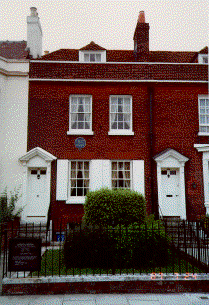
Charles Dickens was born on 7 February 1812 in his parents' house at Mile End Terrace, Portsmouth (now 393 Old Commercial Road) and was later baptised at St. Mary's Church, Portsea. His father John Dickens was an 'extra clerk' in the admiralty. During the time that Charles Dickens and his family lived in Portsmouth the City was expanding very quickly and the dockyard was particularly of immense importance due to the wars against Napoleon and the general threat from France. John Dickens was an man who regularly lived beyond his means and hence the Dickens family moved several times within Portsmouth -- at one time living close to the gates of the Naval Dockyard. Charles Dickens early memories are said to be of living in this 'small cheap house with wooden steps up to the front door. . . .' He also had dream-like recollections of playing in the small back garden and being taken to watch the sailors coming off the ships. The family later moved to London.
Charles Dickens draws on his memories of Portsmouth in Nicholas Nickleby -- Nicholas and Smike tramped to Portsmouth and Mr. Crummles lived in St. Thomas's Street and there they lived 'off mutton and onion sauce'. Nicholas and Smike found 'two small rooms up three pairs of stairs and a ladder at a tobacconist on the Common Hard'. He even drew upon the life of his own father who provided the inspiration behind the characters of Mr. Micawber and Mr. Dorrit.
The two women in his life, Maria Beadnell and Ellen Ternan are both buried in the cemetery at Highland Road and although he actually married Catherine Hogarth their marriage was not a happy one. He met and fell in love with Maria Beadnell as a young man, but she cruelly rejected him -- he never recovered from this and it also affected his literary work. In his writings he found it difficult to depict an adult love affair and it also damaged his ability to show affection. His relationship with Ellen Ternan, an actress, was a secret and lasted until Dickens died.
He returned to Portsmouth on several occasions to read his works in St. George's Hall, Portsea -- close to the house where he lived as a child.
When John and Elizabeth Dickens arrived in Portsmouth immediately after their marriage at St. Mary le Strand, London, on June 13th 1809, they took the house shown on this page as their first home. It was then known as 387, Mile End Terrace, Commercial Road, Portsmouth.
During their time in this house they had two children, Fanny born in 1810, and Charles born on February 7th 1812. The family removed to No.16 Hawke Street, Portsmouth in June 1812 and were eventually recalled to London in 1814.
The Museum now represents the kind of family house which Charles probably experienced during the first few months of his life. The interiors reflect the common furnishing styles of the late Georgian / early Regency periods and give some indication of what a new family would have concerned itself with at that time.
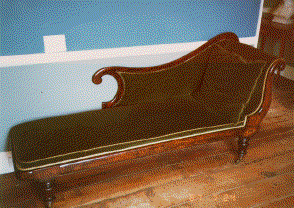
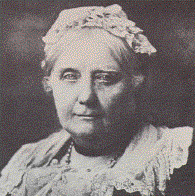 The most important of the Museum's possessions related to Dickens is the couch on which Dickens died at Gad's Hill Place on 9 June 1870. The couch was presented to the Museum in 1909 by Georgina Hogarth, Dickens's sister-in-law and executrix.
The most important of the Museum's possessions related to Dickens is the couch on which Dickens died at Gad's Hill Place on 9 June 1870. The couch was presented to the Museum in 1909 by Georgina Hogarth, Dickens's sister-in-law and executrix.
This page is still in its infancy. If you would add any contribution to the page (with texts or images), I would gratefully appreciate it. Please e-mail me then at: matsuoka@lang.nagoya-u.ac.jp.

 Top of Page
Top of Page  Mitsuharu Matsuoka's Home Page
Mitsuharu Matsuoka's Home Page
